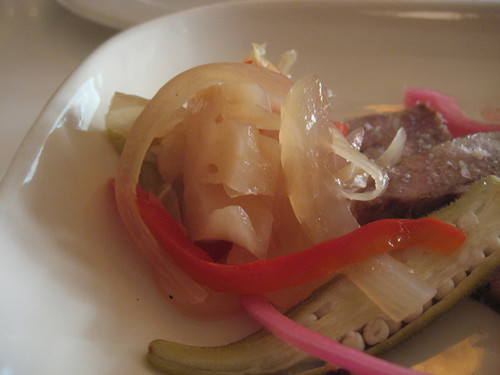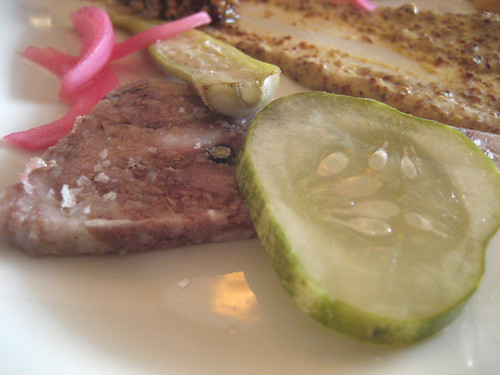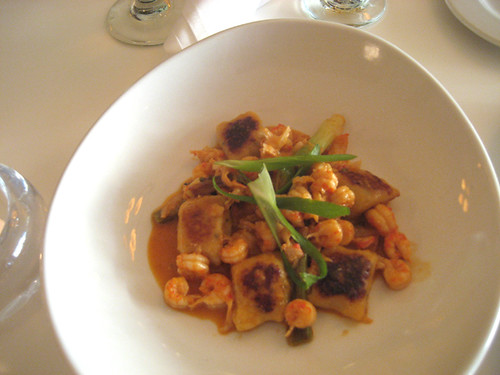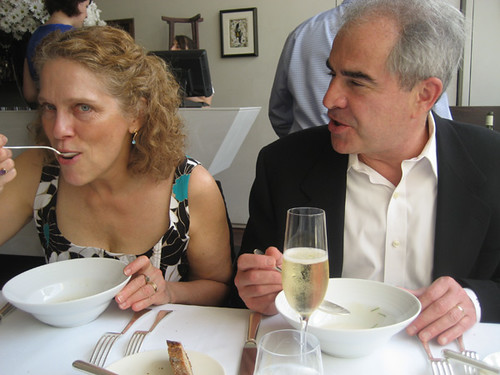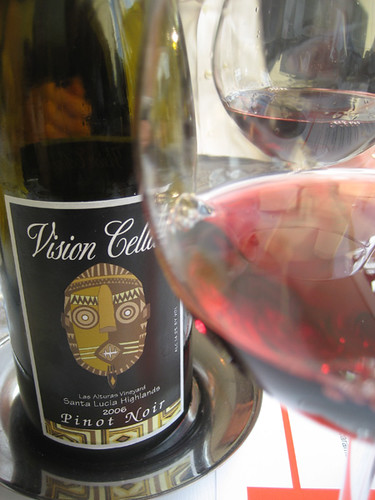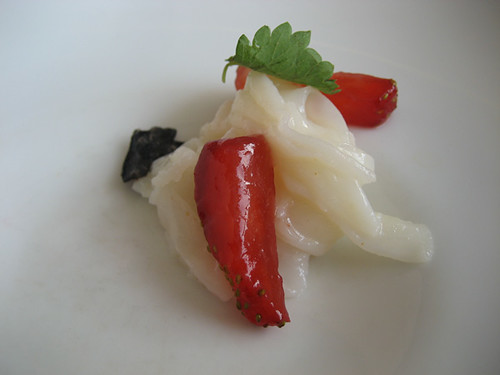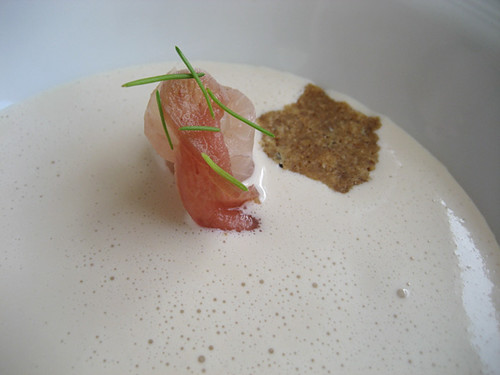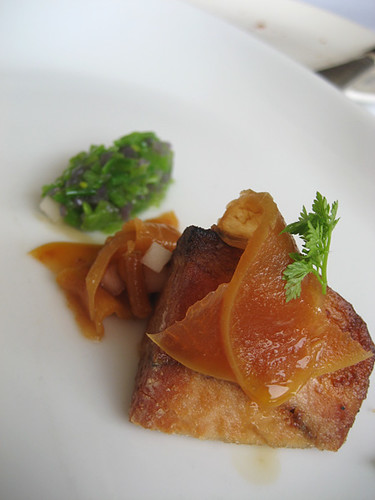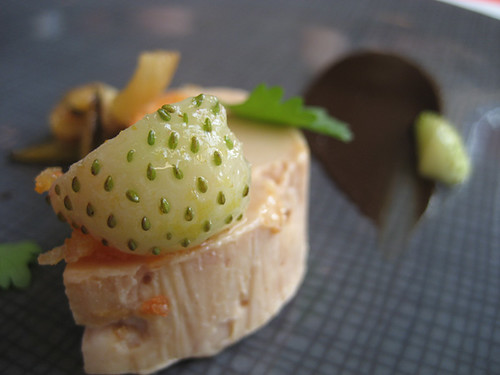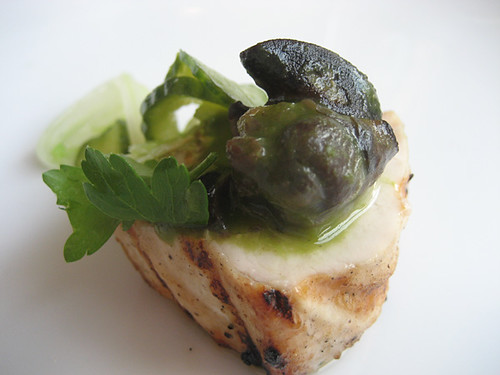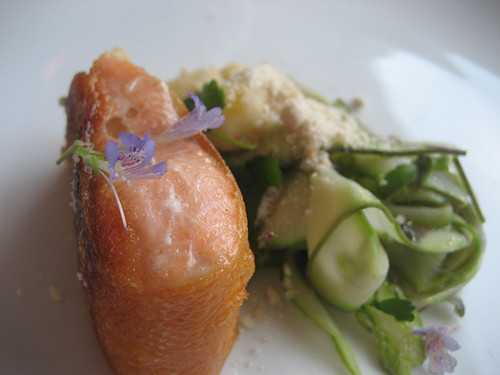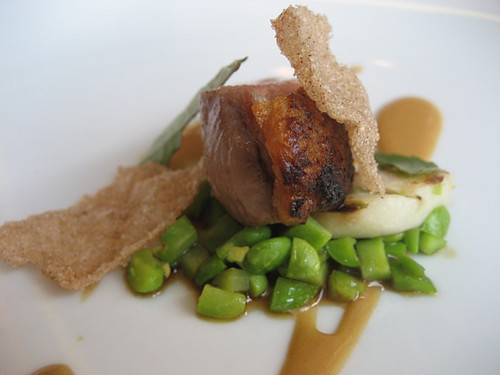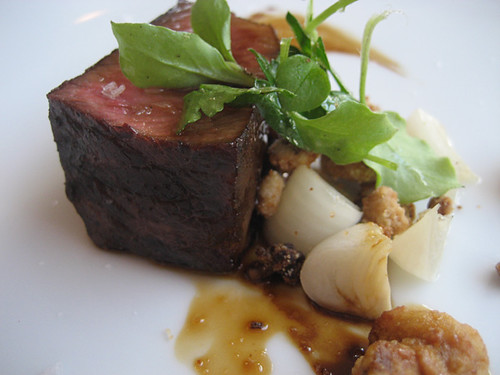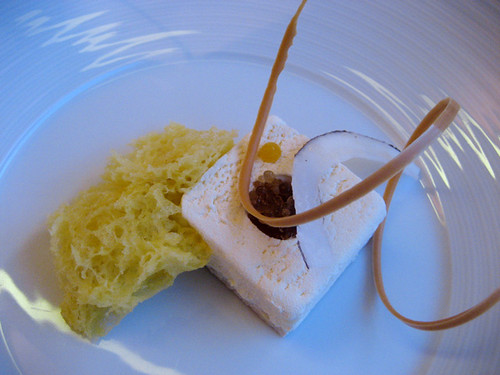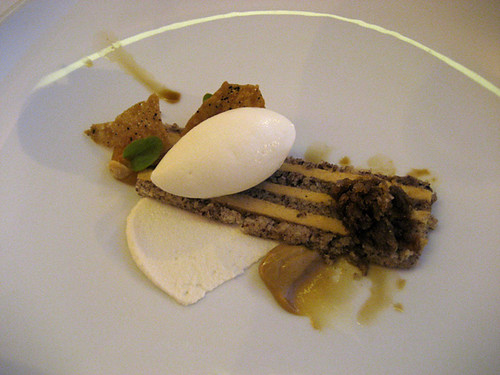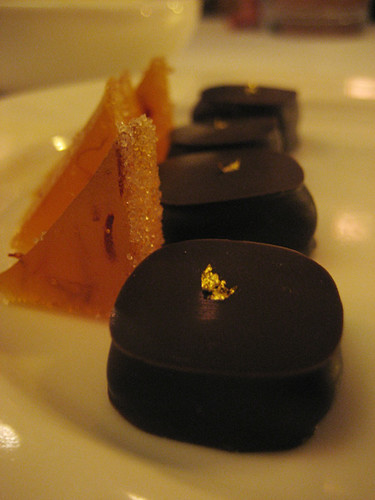
Two ideologies, one American and individualist, the other rooted in a pitiless foreign dogma, challenging one another not via arms, but through a peaceful competition, to achieve a dream that mankind had known since its earliest days…
…I refer, of course, to online debates as to whether plain American road food made by democratic ordinary joe cooks can be considered fine cuisine, or if that honor is to be reserved for the products of severe, hierarchical French kitchens. Not long ago Steve Plotnicki, that up-to-the-minute bellwether of the state of hoity-toitiness in America, fired a Sputnik of absolutism across the night sky of LTHForum by stating:
Fact. Hamburgers and steaks aren’t art. The closest you can get to a hamburger being art is the DB Burger as it is a composed dish. Toppings on a hamburger just don’t rise to the level of being an actual culinary composition.
In short, a hamburger can’t be art unless it’s so Frenchified that it’s no longer recognizable as itself. On the contrary, I believe that a well-made hamburger and fries is as perfectly constructed and balanced a peasant meal as any product of rustic French tradition— combining the rich pagan satisfactions of beef over fire with a delicate combination of sweetness (ketchup), salty vinegariness (mustard, pickle), umami (ketchup again), onion bite and dairy lushness (cheese). Add potatoes (more saltiness, more friedness, more ketchup) and you have the meal which rightly defines America.
Which is not to say that its virtues aren’t often observed in the breach. Last year we drove the Family Truckster to Wyoming, a state where lunch could be summed up with the single phrase “Where are we going to eat a hamburger today?” Without exception, the hamburgers were as indistinguishably functional as the gas we bought at the gas stations, sheer fuel made with frozen patties and served with a side of pale blond foodservice potato-stubs.
The first three days we were in Kansas, we also ate hamburgers— but this time it was by choice, and what a difference it was to be in a state where frying a hamburger is a noble calling. Kansas and Wyoming are both cattle country, but for whatever reason, it’s the beef states of the midwest which take the hamburger most seriously. 60 years of fast food has taken its toll; you wouldn’t say that every small town still has a drive-in where the meat is ground fresh and patted by hand. But a lot of them do.
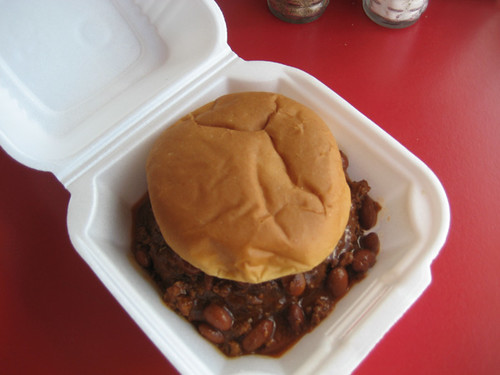
When I was growing up in Wichita, my two favorites, arrived at by a long process of sampling, were Bill’s Big 6 and Livingston’s Diner. Bill was a survivor of the Bataan Death March, which earned him indulgence for whatever racist or crackpot stuff came out of his mouth in later years, not to mention the unbelievable jet black toupee perched atop his head; it was his place and if you didn’t like it, you were free to go somewhere else. Bill and Mary Lamb retired some time back and, in all likelihood, Bill has joined his band of brothers in Valhalla; Livingston’s is still around, but I didn’t make it there and, if I did, it would probably be for a chicken fried steak anyway (for me, the standard by which every one in the 30 years since has fallen short). Instead, my first visit was to a mini-chain which first appeared while I was in high school, Bionic Burger, and quickly formed the third of the great burger triumvirate of my youth.
Bionic Burger actually had its origins in Oklahoma, the rude and untutored wilderness to civilized Kansas’ south, and its Okie origins showed in those days in the sketchily ramshackle restaurant on the dirt-road south side of town where the fat, overalled cook would sit rolling balls of meat and setting them on squares of paper. When a burger was ordered, he would slap the paper onto the grill with his hand, and peel it back to reveal a jagged-edge patty on the grill.
Bionic Burger has cleaned things up a bit since then; the one I went to, besides being located in an old Long John Silver’s on the tonier northeast side, now puts the burger-making process out of sight (and to judge by the results, uses some kind of patty-forming device). Still, this is an exemplary burger by every standard, fresh-ground meat with a bright taste of salt and pepper. the right kind of white bun (springy top but not so much bread that it interferes with the meat; few bakeries seem to get this right in Chicago), and thick fresh-cut fries which came out with a little too much vegetable oil sticking to them, and in much too big a quantity (word of advice: almost anywhere in Wichita, a regular order for one is enough fries for two), but still better than a Five Guys’ franchise’s best day. Though Kansas and Oklahoma may be distinct political ecosystems (Kansas is libertarian Great Plains, Oklahoma Bible-belt Southern), on burgers they are of one mind.
The next day we went to Hutchinson, about 45 minutes to Wichita’s north. For being the closest town of any consequence, it’s surprising how rarely I ever went to Hutch in my childhood, but it didn’t take long to see why: it’s a pretty depressed place, dusty and out-of-date looking like a lot of Rust Belt towns in Indiana or Michigan. But then you’re driving in a neighborhood of modest houses and beatup cars, and suddenly come upon this:

Believe it or not, obscure and rather down-at-heel Hutchinson is home to the second or third best collection of space stuff in the world, ranking with the Smithsonian’s Air and Space Museum and the Kennedy Space Center in Florida. How, you ask? Well, back in the 60s the director of the local planetarium started collecting stuff that NASA had discarded, and consulting for space movies and TV programs (often in exchange for the props after they were done with them), and later, as the Soviet Union crumbled, he began wheeler-dealing with the Soviet space program, too. Sadly, he eventually went to jail for mixing his official and personal space junk dealings, but the result is a museum you’ve never heard of that has both a genuine German V-1 and V-2, the exact replica of Chuck Yeager’s Glamorous Glennis from The Right Stuff, a full size lunar lander they helped build for NBC’s space coverage, spacesuit and camera replicas from Apollo 13, a Soviet Vostok space capsule (used), Gus Grissom’s Mercury capsule that sank when the hatch blew and was recovered 30 years later, and much more, a surprisingly comprehensive tribute to the greatest battlefield of the Cold War. Really, it’s astonishing how good a museum this is for being in the middle of nowhere (quite literally, given that we’re talking central Kansas), I can’t recommend a detour here highly enough for anyone crossing the US on I-70, say.
Along the way, Hutch decided to make an attraction out of its only other point of note, the massive salt mines located 650 feet below the surface which, besides providing road salt to Chicago for decades, are also used for safe underground storage by Hollywood of treasures like the negatives of Gone With the Wind and The Wizard of Oz. The only thing more improbable than finding a Vostok space capsule in Hutchinson, then, is to find the Batman suit with nipples from the George Clooney Batman movie 650 feet below it:

The kids, frankly, loved the subterranean creepiness of the salt mine even more than the space stuff. Anyway, back to burgers. In between Bruce Wayne and Yuri Gagarin, we came into town along an industrial strip, and were immediately smitten by a place called Oliver’s Burger and Bait:

This was no cutesy cracker-humor name, either; the actual bait shop is located in a shed out back, and at one point during service the waitress had to go open it for a customer.
I wouldn’t say Oliver’s was a great burger (I actually had a chili burger, for variety; the chili was canned), but it was a perfectly decent one, and more than that, it was a demonstration of what is so appealing about the midwest. From the moment we walked in, city slickers all, and found the staff and the regulars joking good-naturedly, we were made at home, inquired after (“Didn’t think I’d seen y’all in here before”) and quickly included in the friendly joshing by which they pass the day. In the end, we walked out not only cheerfully fed, but in possession of the gift of a T-shirt for my 8-year-old (“Burger and Bait: If we’re not cookin’ we’re hookin’”), last one in stock, on the house. Thanks, guys, for making us feel at home.
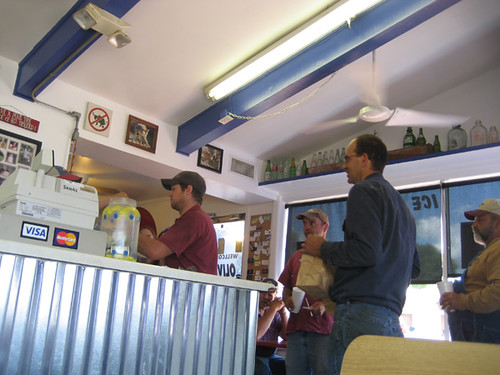
The last burger I tried while in the greater Wichita-Hutch area was one that apparently has been around for decades, but which I had never heard of. As the name suggests, Bomber Burger is located way down south in the heart of Wichita’s military-industrial complex, near the Boeing military plant that’s the city’s largest employer, and McConnell Air Force Base, no doubt serving burgers and brewskis to the crews who literally built and flew the bombers that were the other side of the aeronautical struggle with the Russkies. Well, someone growing up on the white collar east side of town had little enough reason to ever go to that part of town, though I might have recognized one or two of the old roadhouses (the kind with dancers) down on K-15. (For more information see my friend Scott Phillips’ crime novel set in the 70s Wichita demimonde, The Ice Harvest.) If the Cold War comes dressed in noble aspirations at the Cosmosphere, here’s the Kansas blue collar democratic ethos in its most raucously independent-minded mode:
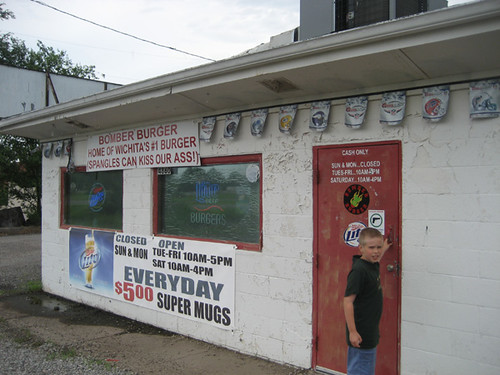
Spangles, incidentally, is a local burger chain of no particular distinction. Not sure why Bomber Burger should have chosen them as an enemy to replace the Soviets, but it’s so typical of the redneck-libertarian Kansas spirit to do something like that, and if you were going to be offended by Bill’s Big 6, you really don’t want to go to Bomber Burger and start reading the walls, where ex-wives, non-Phillies fans (maybe the owner’s from there originally?) and President Obama come in for equally sardonic treatment. Me, I had a great old time, not least because I dragged my sons and their girl cousin there and sat them at the bar (“Now children, this is what we call a ‘shitkicker’ bar”). Much of the conversation, rougher (note the “no guns” symbol above my son’s head there) but still in its own way as welcoming as at Oliver’s, had to do with how the fellow seated next to me had acquired the nickname “Dirty Amish Hippie.” (Somebody called him that in a fight in a bar, and he laughed for ten minutes straight, ending the fight.)
Ah, to be back among my people.
Anyway, the Bomber Burger is a real bomber, a fat 1/2 pound or so compared to the thin patties typically served in the area, but it was made with the same automatic, why-would-you-do-it-any-other-way freshness and handmadeness of the other burgers we ate, and the burger and fries were every bit as good as the atmosphere. After three days of burgers, there wasn’t time or stomach to try Walt’s or Takhoma Burger or Ty’s or Livingston’s or West Street, here’s a guy with a whole list of burger joints which I mostly haven’t tried yet, but at least I was certain that the iconic American meal continued to be in very good hands in my hometown— and, whether or not it was art, to certainly represent a high level of craft.
Thanks for the burgers, and the welcome. Dos vedanya until next time, y’all.
Bionic Burger
6121 East 21st Street
Wichita, KS 67208
other locations
Oliver’s Carry Out: Burgers and Bait
228 E 4th Ave
Hutchinson, KS 67501
Bomber Burger
4860 South Clifton Avenue
Wichita, KS 67216-3066

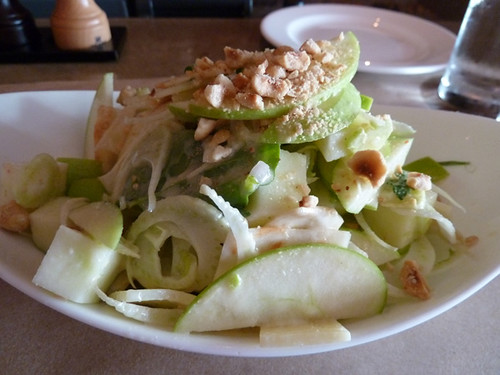
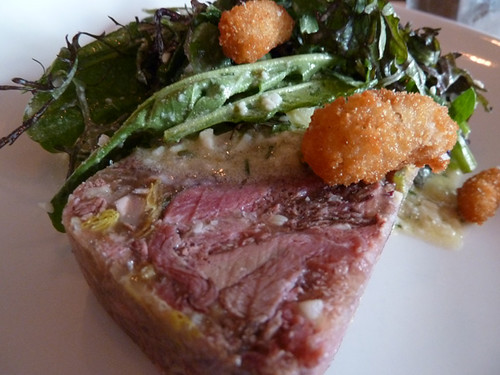
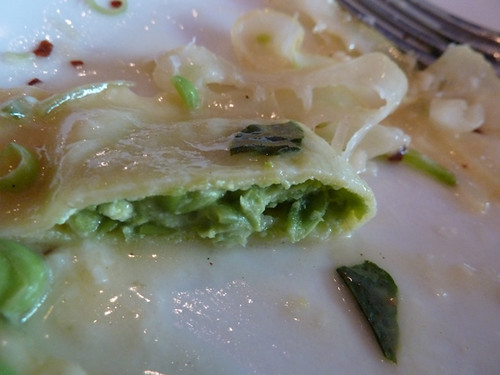
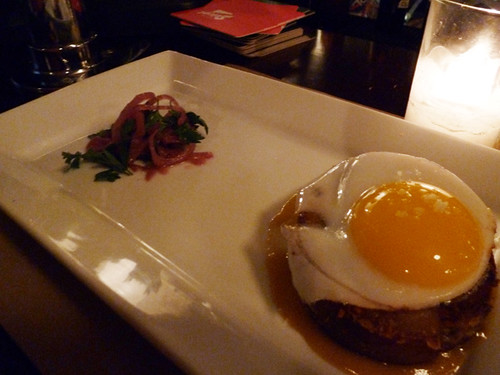


 Posted in
Posted in 


